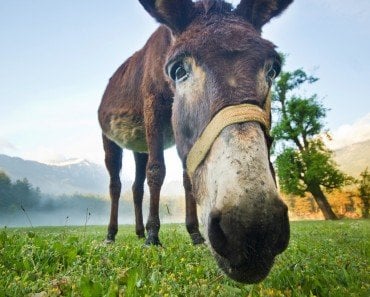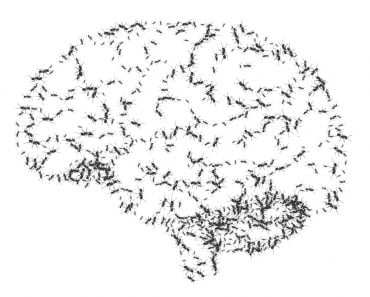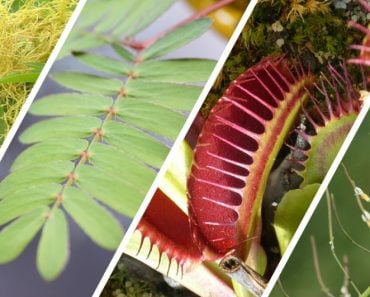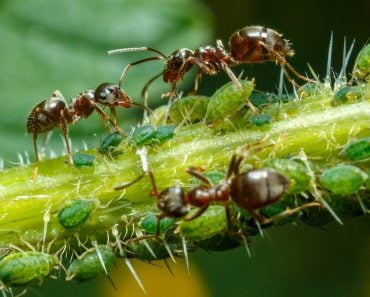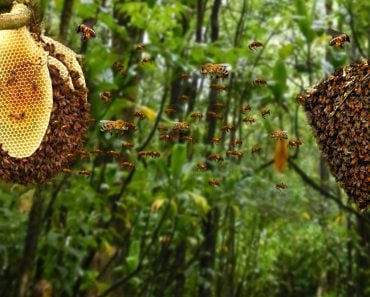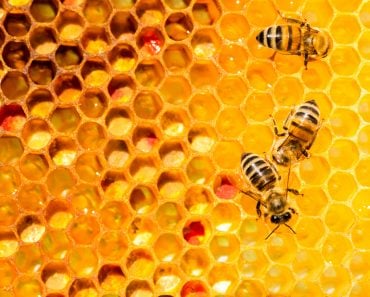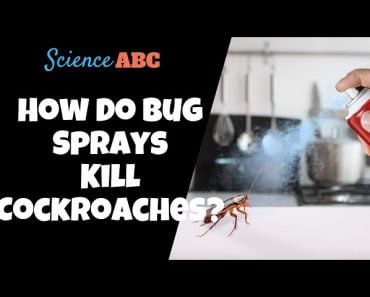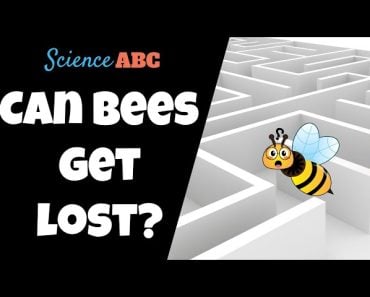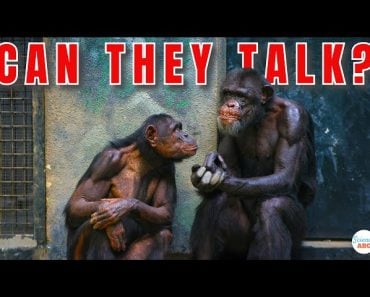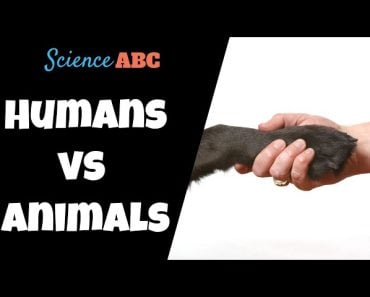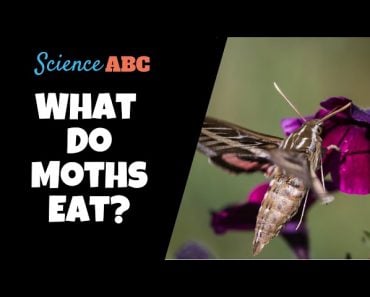Table of Contents (click to expand)
When two ants collide, or meet each other head-on, they smell each other thoroughly to make sure that they belong to the same colony. If not, things can get tense! They probably also share information about the food source they are foraging.
The other day, while I was staring out the window in my room, thinking of how Marvel could bring the Hulk back in the next Avengers installment, I observed a line of ants walking along the windowsill, moving towards each other in two single-file lines. I couldn’t help but notice that almost every ant was touching the oncoming ant head-on before continuing with their journey.
It wasn’t the first time I had seen ants displaying such behavior, and my question always is, why do they do that?
Recommended Video for you:
Chemical Communication
Just as we celebrate brotherhood among humans, ants celebrate their “anthood.” Ants live their entire lives in close quarters to their nestmates. An average nest easily houses thousands of ants; a bigger colony can have up to 500,000 ants.
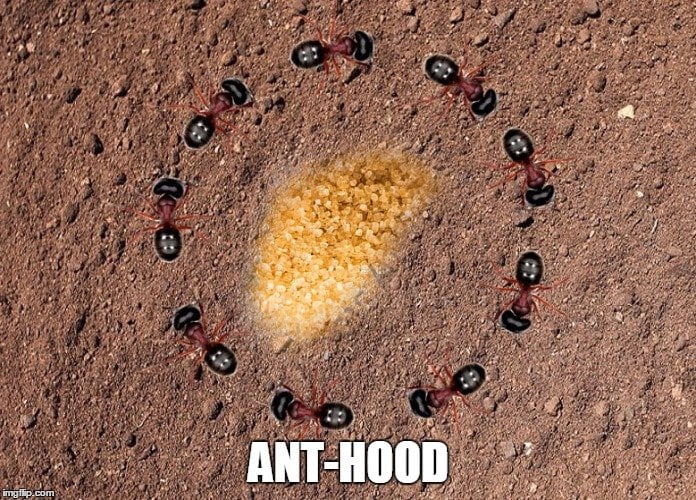
Considering their large numbers, an ant colony has not one but a combination of methods to achieve great communication without ending up in chaos.
Many ants have poor vision, so they use different senses to communicate: smell, taste, touch, and sound.
Their smell and taste are unlike ours. Their antennae (legs and mouthparts) have chemoreceptors and odor receptors that pick up on different molecules in their environment.
These chemicals define the ant’s life. Ants secrete a host of chemicals that can signal complex information related to reproduction, food, finding shelter, or anthood to other ants. However, with more than 15,000 different ant species, different species have different chemical signals to each other.
Pheromone Trails
When ants are out and about to search for food, they lay down a pheromone trail for others to follow. Once they’ve hit the jackpot (your picnic basket), they turn around and lay a new pheromone trail back to the nest. This is why you see two lines of ants, one going to the food and the other returning.
On their trail, they encounter each other and often bump into or greet each other. This is called mutual antennation. There are a few reasons why they could be doing this.

First, they are just exploring and end up bumping into each other. A 2018 study found that Carpenter ants use their antennae to explore the odor trails they’re on.
Second, they are exchanging information about the food source.
Closer to the colony, the forager ant will interact with the other ants to give them an idea of what to expect when they reach the end. If the thing is edible, the ant might carry a piece of it in the mouth and let its fellow ants have a taste to understand better. For a stable food source (your kitchen), the ants will strengthen the pheromone trail to the location (your fridge) as they repeatedly use the trail.
The nest can also tell the forager ants when there is enough food. The forager ants will reduce and halt their trips to a food source.
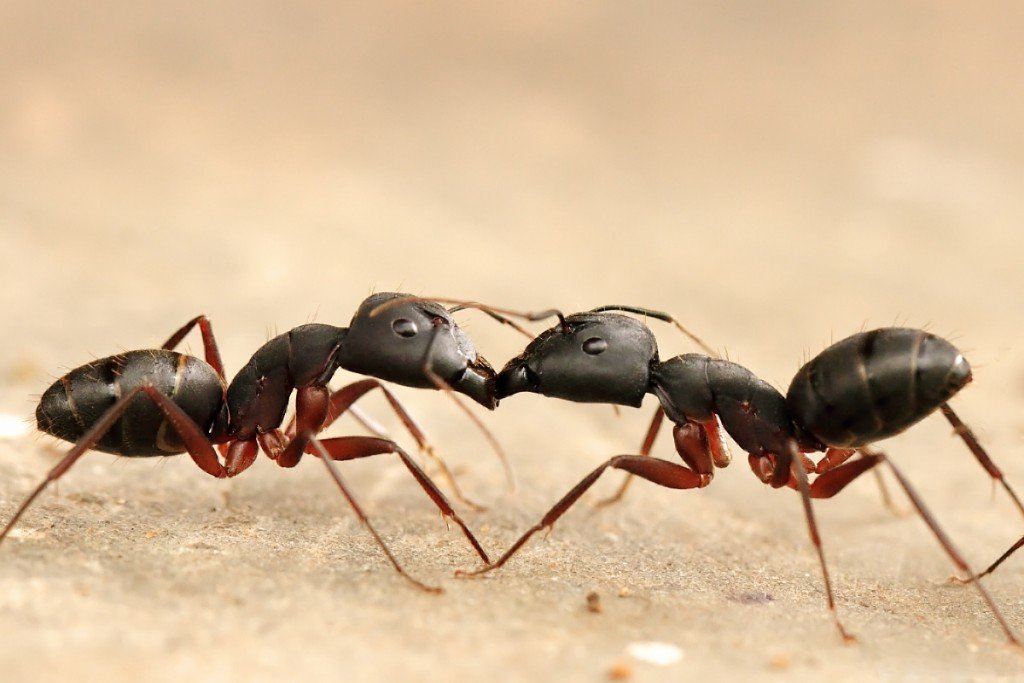
Third, they share information about the best way to get to the food, the shortest route, whether the route is easy to navigate, and whether it is safe from enemies.
Ants will change their routes to avoid “dear enemies”—a name researchers gave for the ant’s neighbors to whom the ants are less aggressive than they would be to a stranger. If there are no “dear enemies,” the ants will take the shortest route to the food.
A Balanced Diet
Remarkably, researchers have found that worker ants are also the colony nutritionists. If the colony has a nutrient deficiency, the ants compensate for that by finding a better food source. In their 2020 paper, the researchers write, “We found that ants were rapidly able to match their foraging decisions to their nutritional needs, even if the deficiency concerned a single amino acid.”
How do they do this? The worker ants decide whether to eat or not eat a food source, thereby beginning to change their pheromone trail to the food.
Social Tummies Of Ants
Trophallaxis, commonly observed in insects like ants, wasps, and termites, is the practice of transferring food from one member to another in the same colony. It may be a mouth-to-mouth transfer or an anus-to-mouth feeding.
The idea of transferring food in such a way might seem gross at first, but it’s far from it. On the contrary, it’s a very friendly practice and highly valued in ‘ant circles.’ When an ant (or larvae) is hungry, it will poke another nestmate with its antennae. Now, if the second ant has some food to spare, they both join at the mouth, and the mouth-to-mouth transfer of food takes place.
Trophallaxis strengthens the ants’ bonds with each other and, in turn, the whole colony. They share odor molecules as they feed, so soon, the colony shares the same smell.
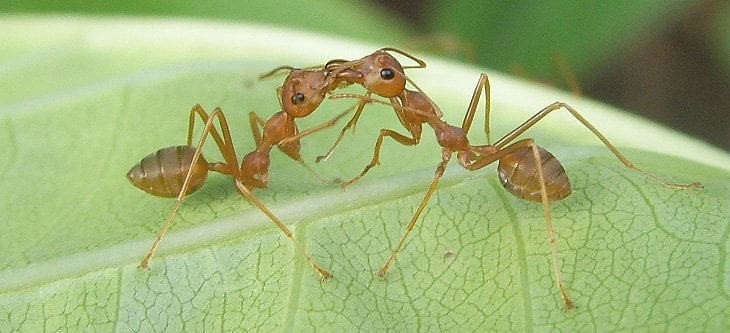
Kin Recognition: Are You My Sister?
When two ants collide or meet each other head-on, they smell each other to exchange a wealth of information. They check if the ant is their sister (all worker ants are female).
If not, things can get tense!
Ants are good at identifying intruders (something true of other social insects such as bees and termites).
Every ant colony has their unique scent. This unique scent is because of a mix of pheromones, which helps them differentiate between friend and foe. This system of pheromones is also used to understand the colony’s status, ranging from territorial conquest to basic colonial activities.
Each caste of ants within the same colony also has a different smell. The workers, the queen, the few males, and the larvae all smell different.
Ants Use Sounds To Communicate.
Yup, ants do talk to each other. They do so by rubbing their legs on their body to create various sounds. Humans never get to hear them as they are of low resonance, but the other ants can clearly understand what the sounds mean.
We see sound production in the ant species Camponotus senex that lives in the trees in nests built from silk from its larvae. These ants drum their abdomen against the nest to alert other ants of danger. Hearing one or two ants drumming, other ants follow suit, and soon the entire nest is drumming, a sound louder than human speech.
Next time you see an ant bumping into every other ant that comes their way, don’t judge it on its poor navigational skills. It might just be warning the others of danger!
References (click to expand)
- http://web.archive.org/web/20201222033445/https://ucrtoday.ucr.edu/30857
- Ant Colony | Ask A Biologist - Arizona State University.
- Dahbi, A., & Lenoir, A. (1998, May 8). Nest separation and the dynamics of the Gestalt odor in the polydomous ant Cataglyphis iberica (Hymenoptera, Formicidae). Behavioral Ecology and Sociobiology. Springer Science and Business Media LLC.
- Jackson, D. E., & Ratnieks, F. L. W. (2006, August). Communication in ants. Current Biology. Elsevier BV.
- Richard, F.-J., & Hunt, J. H. (2013, July 13). Intracolony chemical communication in social insects. Insectes Sociaux. Springer Science and Business Media LLC.
- DAVID MORGAN, E. (2009, February 12). Trail pheromones of ants. Physiological Entomology. Wiley.
- Odor Trail through Ant Country.
- Lessig, E. K., & Nonacs, P. (2021, March 3). Ant foraging path use responds to different types of risk and their encounter probabilities. Insectes Sociaux. Springer Science and Business Media LLC.
- Dimarco, R. D., Farji-Brener, A. G., & Premoli, A. C. (2010). Dear enemy phenomenon in the leaf-cutting ant Acromyrmex lobicornis: behavioral and genetic evidence. Behavioral Ecology. Oxford University Press (OUP).
- Draft, R. W., McGill, M. R., Kapoor, V., & Murthy, V. N. (2018, January 1). Carpenter ants use diverse antennae sampling strategies to track odor trails. Journal of Experimental Biology. The Company of Biologists.


